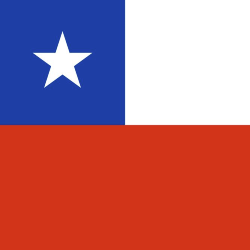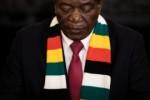Gaza Journalist Fadi al-Wahidi Avoided Israel’s “Red” Zone. Israel Shot Him Anyway.
In partnership with
This investigation, conducted by Arab Reporters for Investigative Journalism, is part of the Gaza Project, a collaboration involving over 40 journalists from 12 organizations coordinated by Forbidden Stories.
The image of Al Jazeera cameraman Fadi al-Wahidi lying motionless on the pavement quickly spread among journalists in Gaza. His press vest is visible but it turned out to be useless; he was shot in the neck, just above the flak jacket.
It was October 9, 2024, and al-Wahidi had been reporting on the displacement of Palestinian families in Jabalia in the northern Gaza. The al-Saftawi neighborhood, where he was working, had been designated by the Israeli military as a “yellow” zone, outside of the “red” evacuation area.
In video footage of that day, gunfire erupts. Moments later, al-Wahidi lies on the ground, unmoving. His colleagues are unable to reach him immediately for fear of being shot themselves.
The image of al-Wahidi lying motionless recalled the lifeless body of Shireen Abu Akleh, the Palestinian American journalist who was killed by the Israeli military in the occupied West Bank city of Jenin in May 2022 — another journalist in a press vest, shot while reporting.
Related
Shireen Abu Akleh’s Colleagues Are Still Waiting for Justice
“Fadi, Fadi, Fadi is injured!” Imam Bader, a journalist on the scene that day, shouts in one video, his voice thick with anguish.
“Fadi, do you hear me? Move if you can,” he calls out, crouching behind a white car near where al-Wahidi lay. “Oh God, oh God!”
Islam Bader, a journalist with Al Araby TV, was across the street.
“We felt like the gunfire was right over our heads,” he said. “The bullets didn’t stop. They were chasing us. But in that moment, you can’t look around, you can’t tell what’s happening. I crossed the street, and suddenly I heard the guys shouting, ‘Fadi, Fadi!’ I was trying to make sense of what was going on, and they said Fadi had fallen.”
Six journalists, including al-Wahidi, said in interviews that they were directly targeted despite standing in broad daylight, wearing press vests, and reporting from a “yellow” zone. Arab Reporters for Investigative Journalism, The Intercept, and their partners geolocated the position of the journalists that day, confirming they were approximately 650 meters outside the evacuation zone. In several videos, the flak jackets are clearly marked “PRESS.”
“We were shot at directly,” al-Wahidi said from his hospital bed in Gaza, before his evacuation from the Strip. “Even now in my ears, the bullets are bouncing off the door next to me, into the walls next to me.”
“We were fully identifiable as journalists,” said Mohammed Shaheen, a journalist for Al Jazeera Mubasher, who was also there that day. “The gunfire was aimed directly at us.”
A video taken by al-Wahidi himself — obtained by ARIJ, The Intercept, and their partners but never posted online — captured the last 16 seconds before he was hit. He’s running, filming in selfie mode, when the screen jolts and the video cuts off.
Al-Wahidi and his colleagues weren’t the only journalists attacked in Jabalia that day. A kilometer way, about half an hour earlier, Mohammed al-Tanani, a cameraman for Al Aqsa TV, was killed in an airstrike. Tamer Lubbad, the channel’s correspondent, was injured in the same attack.........






















 Toi Staff
Toi Staff Tarik Cyril Amar
Tarik Cyril Amar Jeffrey Bernstein Ph.d
Jeffrey Bernstein Ph.d Gideon Levy
Gideon Levy Maryam Aldossari
Maryam Aldossari Sabine Kinkartz
Sabine Kinkartz Jennifer Gerlach Lcsw
Jennifer Gerlach Lcsw Andrew Mitrovica
Andrew Mitrovica Tafi Mhaka
Tafi Mhaka Belen Fernandez
Belen Fernandez Maximilian Hess
Maximilian Hess Leonid Ragozin
Leonid Ragozin
